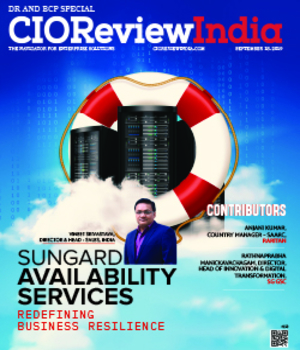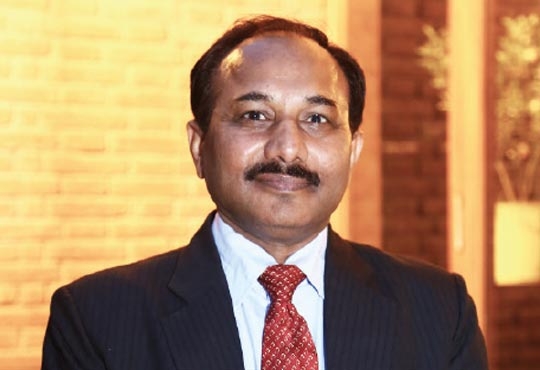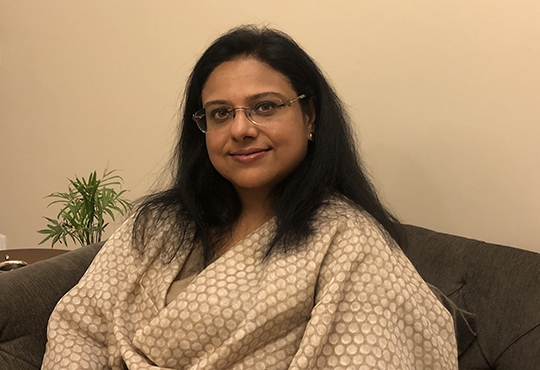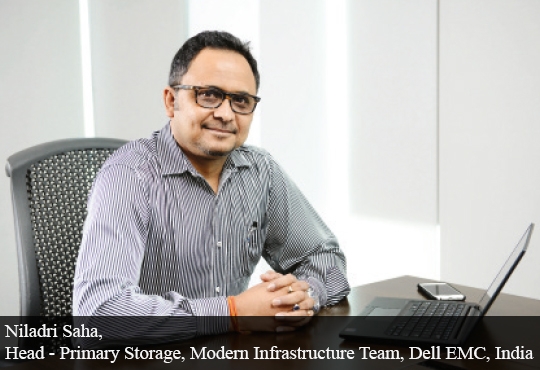IoT before IoL (Internet of Lives)
Tekin Gulsen, CIO, Global IT & Corporate Planning Director, Kordsa Global | Monday, 06 February 2017, 10:23 IST
 IoL (Internet of Lives) may sound like a futuristic concept from a science fiction movie where all the living things are digitally connected. Sadly, it looks inevitable today with the pace that in which technology is integrating human beings’ and animals’ bodies with wearable technologies and embedded chips. However, IoT (Internet of Things) is already here, it is a part of our lives and it is here to stay. Regardless of the business you are in, there can be numerous ways where IoT technologies can be utilized to create value or competitive advantage.
IoL (Internet of Lives) may sound like a futuristic concept from a science fiction movie where all the living things are digitally connected. Sadly, it looks inevitable today with the pace that in which technology is integrating human beings’ and animals’ bodies with wearable technologies and embedded chips. However, IoT (Internet of Things) is already here, it is a part of our lives and it is here to stay. Regardless of the business you are in, there can be numerous ways where IoT technologies can be utilized to create value or competitive advantage.
Making any product or item smarter and connected provides IT leaders and other business leader’s unique opportunities to create value for the company and the customers. Connected things can be used to improve internal processes, to increase provided service or product’s value proposition or to completely transform the business model based on the data generated.
Business Value of IoT
Process improvements can happen as a result of tracking a product or other components involved in the supply chain processes very closely and identifying any improvement areas in the processes. A connected, smart product can provide a unique value to the customers. Smart products can provide additional features and functions that are beyond the limitations of the traditional products. Companies may also transform their business models from selling products or services to offering additional services that are based on valuable, meaningful information to their customers.
All these potential benefits of IoT are realized only when valuable data is generated and this data is transformed into information and knowledge. The journey of raw data to become valuable information requires a well established data governance model, advanced data analytics platforms and real-time insight.
All recent mega trends in technology such as social, mobile, big data analytics and cloud computing are very closely related and integrated with IoT. IoT is also one of the integral concepts of Industry 4.0 in manufacturing sector since it is related to both the end product and production systems used in manufacturing.
IoT in End Products
While IoT can be used in all stages of the value chain, it provides the most value to the end customer when it is applied to the product. Depending on their level of advancement and maturity, smart products’ capabilities can be ranked as monitoring, controlling, optimization and autonomy.
Monitoring provides status information about the product itself and its environment. It can also generate notifications in case of a change in its status.
Controlling of a product remotely can be possible via software that resides on the product or in the cloud. Products’ functions can be managed and user experience can be customized. This level is more advanced than monitoring only and provides valuable benefits for the customer.
Optimization of a product is also possible by monitoring and controlling a product and improving its performance based on the status. It also allows for problem identification and predictive service indication.
Autonomy of a product means convergence of the above mentioned features so that a product can manage itself and even interact with other systems or products.
Transformation of a smart product not only reshapes the competition, but also expands the borders of a sector. This transformation can take place in the following order:
Traditional product; Smart product; Smart and connected product; Product system (interacting with other related components and products); System of systems (product’s system interacting with other relevant systems)
Critical Success Factors
Since most IoT initiatives are very complex, in order to achieve success, a number of different gears need to work in harmony.
Organizational
IoT projects need to have strong sponsorship and management ownership. Multi-functional project team must be formed with subject matter experts from various areas in the organization. Necessary resources must be allocated and the initiative must be driven by keeping track of the business value objective. On the other hand, top management should also allow for some experimental research and development work so that the team can explore and innovate.
Technology
Because IoT projects require a lot of data transfer, communications infrastructure is critical for the performance of the system. In addition, the data generated must be stored in a reliable, high-performance database. A system integration platform should also be available so that different systems and technologies can be integrated and communicate with each other effectively.
Data
Any errors in an organization’s systems will be visible by the IoT projects which may jeopardize the confidence in the business case of the project. In order to reach the business value objective, IoT data must have a high level of data quality and integrity.
With endless possibilities and all the potential benefits IoT concept has to offer, it sure is very exciting for many organizations. The key is to select the key IoT initiative that generates the most value and provides a distinct competitive advantage.
CIO Viewpoint
By Michael R. Galin, Director - Risk Management, TELUS
A Demanding Environment For Machine Learning
By Shailendra Choudhary, Vice President and Head-IT, Interarch Building Products Pvt. Ltd.
Adopting The Right Disaster Recovery Techniques
By Todd Thomas, CIO, ARA Diagnostic Imaging
CXO Insights
Impact Of Pandemic On Different Countries
By Sonica Aron, Founder & Managing Partner, Marching Sheep
Why The Data Center Is At The Heart Of The...
By Niladri Saha, Head - Primary Storage, Modern Infrastructure Team, Dell EMC, India
Alternative Ways Of Approaching Incident...







